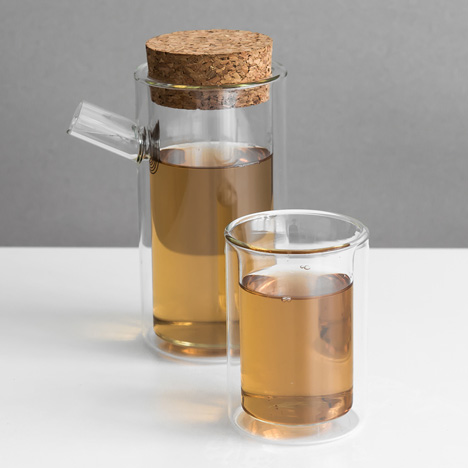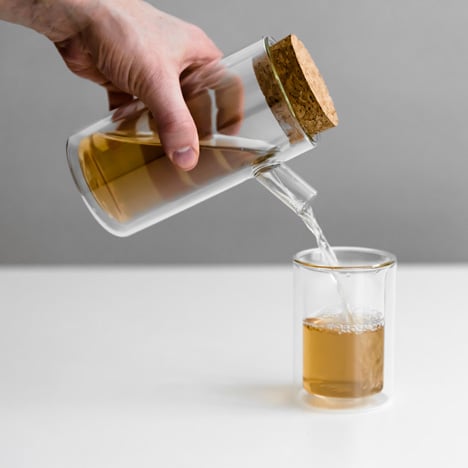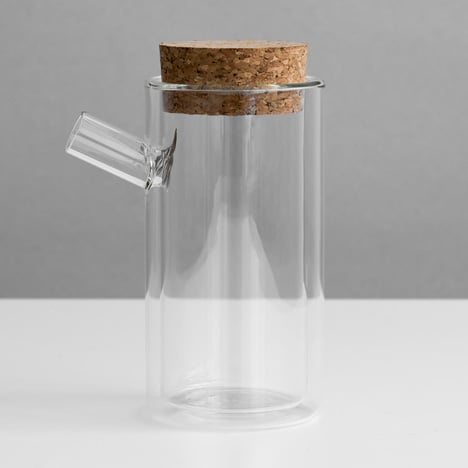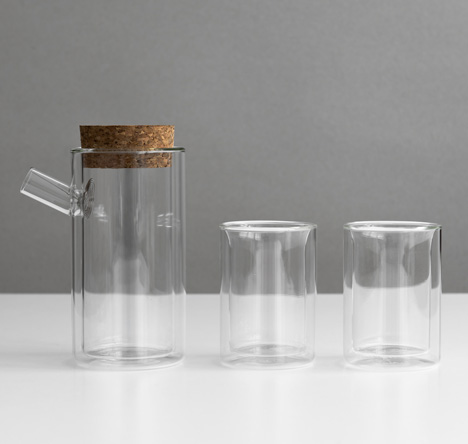Paul Loebach creates tea set with laboratory glass
Brooklyn designer Paul Loebach has used simple forms and materials for a teapot and matching glasses to provide an alternative to the "grandma look" of some ceramic designs (+ slideshow).

Made entirely of glass with a natural cork lid, the Ora teapot for design brand Kikkerland is based on laboratory beakers.
"I was approached by a manufacturer to design an affordable mass-produced teapot using a particular factory that specialised in laboratory glass," Loebach told Dezeen. "I wanted the aesthetic of the teapot to be true to the material and speak to the glass' most typical utilitarian associations."

"My initial ideas were too complicated to produce at a low price, so I worked closely with the factory on pairing down the design to its most essential and easily producible elements," he continued. "This ended up looking remarkably similar to a purely functional 'scientific device' like you might find in a laboratory."
The teapot is made of a double-wall of glass, which eliminates the need for a handle. The two layers insulate the hand from heat but also help keep the tea hot within. Compared to its more bulbous counterparts, Ora also takes up less shelf space.

"I was interested in getting away from the big bulky round 'grandma' teapot look," said Loebach. "I was also very concerned with the amount of space a teapot takes up in the home, and wanted to make something streamlined to store efficiently in the kitchen cabinets where space is always at a premium."
The soft, textured cork lid contrasts with the smooth finish of the glass. The material also adds colour to the otherwise transparent design, along with the brewed tea held inside.

Matching glass teacups invite sharing from the small pot, which holds 400 millilitres – just enough for two cups.
"I wanted the aesthetic of the teapot to be true to the material and speak to the glass' most typical utilitarian associations," said Loebach.

Other designers that have proposed upgrades of the common teapot include Memphis designer George Sowden, who sought to improve the flavour of tea with ultra-fine diffusers in his Softbrew Teapots, and Droog's Richard Hutton who reinterpreted a traditional Chinese pot with a more robust handle.